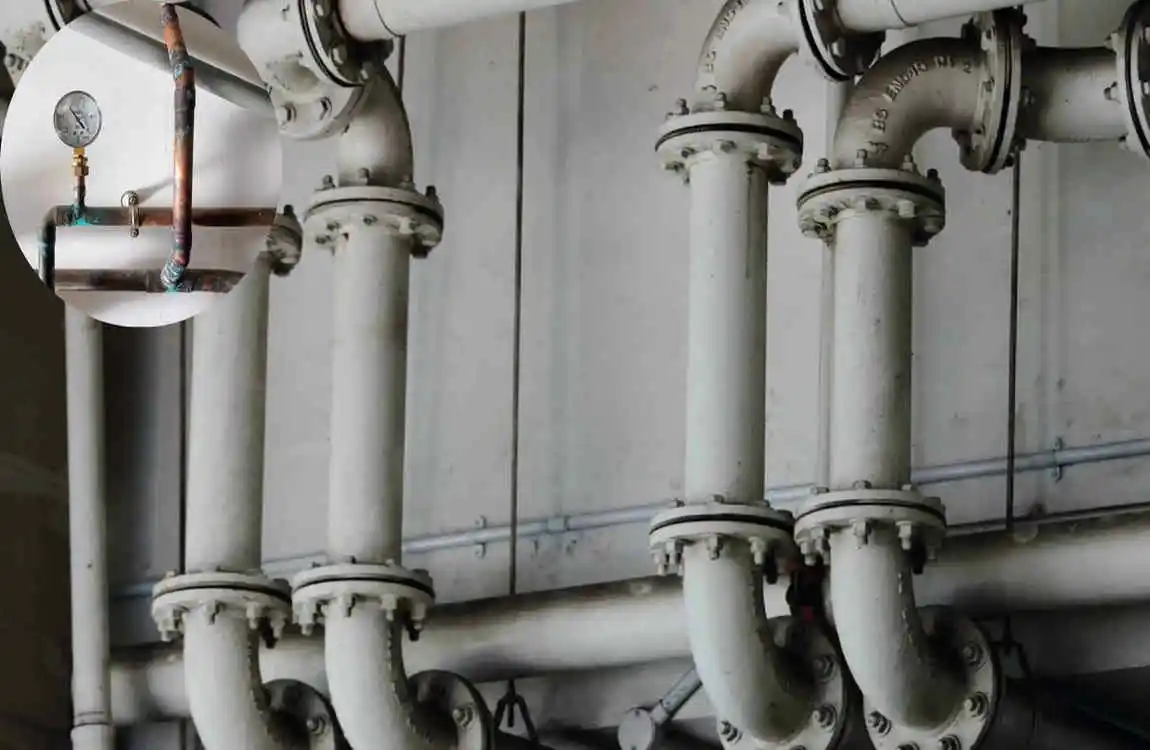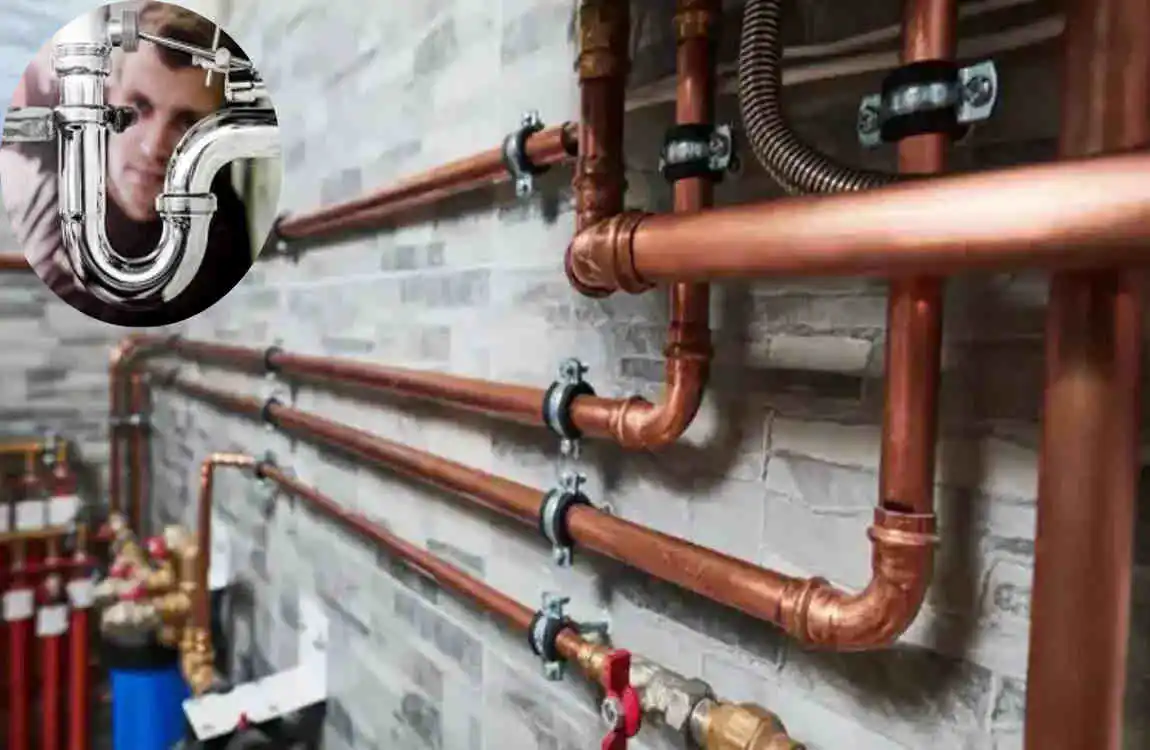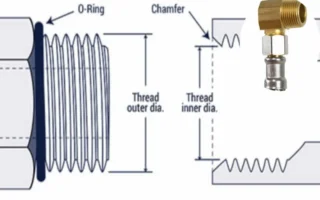Indoor plumbing for modern homes was developed and became widespread in the mid-19th century, particularly in America. While the concept of flushing toilets existed much earlier—Sir John Harington invented the first modern flushing water closet in 1596, and Joseph Bramah made improvements in the late 1700s—indoor plumbing as a common household feature required the development of efficient water and sewage systems. These systems emerged in the early 1800s and led to the adoption of indoor plumbing in homes by the mid-19th century. Cities with comprehensive sewer systems, such as Chicago, played a crucial role in the expansion of indoor plumbing infrastructure. Thus, modern indoor plumbing, as found in homes today, essentially became standard around the mid-1800s.
The Importance of Indoor Plumbing

Indoor plumbing is a cornerstone of modern living. It provides essential access to clean water, which is fundamental for hydration, cooking, and cleanliness.
Without it, our daily routines would be drastically different. Imagine carrying buckets of water from a distant well or relying on outdoor facilities in all weather conditions.
Plumbing systems allow for easy waste disposal, too. This not only promotes convenience but also ensures hygiene by preventing the spread of disease through unsanitary practices.
The presence of reliable plumbing also affects property values significantly. Homes equipped with modern plumbing are typically more desirable in the real estate market.
Indoor plumbing plays a crucial role in promoting health and enhancing the quality of life across communities worldwide.
Early Forms of Plumbing
Long before modern plumbing systems became commonplace, early civilizations relied on innovative methods to manage water. Ancient Egyptians crafted rudimentary pipes from clay and used aqueducts to channel water for irrigation and bathing.
In Mesopotamia, people dug intricate drainage ditches. These channels diverted waste away from living areas, showcasing an early understanding of sanitation.
The Indus Valley Civilization took things a step further with its advanced urban planning. They constructed sophisticated sewer systems that included covered drains running beneath city streets.
These ancient approaches laid the groundwork for contemporary home plumbing practices. The ingenuity of these early societies highlights humanity’s long-standing quest for hygiene and comfort in daily life.
The Invention of the Modern Flush Toilet

The modern flush toilet revolutionized sanitation in households. Before its advent, people relied on rudimentary methods that often led to unsanitary conditions.
In 1775, Sir John Harington designed the first flushing toilet for Queen Elizabeth I. This early version featured a valve and water tank, but wasn’t widely adopted at the time.
It wasn’t until the late 19th century that Thomas Crapper made significant improvements. His innovations included better designs for valves and traps, making toilets more efficient and accessible.
By the early 20th century, indoor plumbing became standard in many homes. The flush toilet transformed everyday life by enhancing convenience and hygiene.
This invention marked a pivotal moment in public health, leading to cleaner living environments across communities everywhere.
Evolution of Indoor Plumbing in the 19th and 20th centuries
Indoor plumbing made a significant breakthrough in the 19th century. Cities expanded rapidly, leading to increased demand for sanitation solutions. This era saw the introduction of cast iron pipes, which replaced earlier materials and offered durability.
As urban living became more common, advancements accelerated. Public sewer systems emerged to effectively manage waste. Homes began incorporating basic bathroom facilities, including sinks and toilets.
By the early 20th century, indoor plumbing was evolving into a standard feature in modern homes. The flush toilet gained popularity alongside the improvement of water supply systems. Fixtures were designed not only for functionality but also for aesthetics.
In this transformative period, access to clean water became increasingly recognized as essential for public health. Innovations continued to shape residential spaces and set the stage for the contemporary plumbing practices we enjoy today.
You may also read (how to move bathroom sink plumbing in your home a simple guide).
Advancements in Plumbing Technology
The plumbing industry has seen remarkable advancements over the years. Innovations in materials have played a key role. PVC and PEX pipes are now the standard, offering durability and flexibility.
Innovative technology is also making waves. Brilliant faucets and toilets can be controlled via smartphone apps, allowing for precise water management. This not only enhances convenience but also promotes conservation.
Leak detection systems are another significant development. These devices alert homeowners to leaks before they become major issues, saving both water and costly repairs.
Water purification technologies have evolved as well. Advanced filtration systems ensure that drinking water is clean and safe, effectively addressing health concerns.
These advancements reflect our growing emphasis on efficiency, safety, and sustainability in home plumbing systems. The future looks bright with continued innovations on the horizon!
Impact on Public Health and Sanitation
Indoor plumbing has had a profound impact on public health. Before its widespread adoption, communities faced numerous sanitation challenges. Contaminated water sources and unsanitary waste disposal led to the spread of rampant diseases.
With the introduction of indoor plumbing, access to clean water became more feasible. Residents could safely drink from taps rather than relying on potentially tainted supplies. This shift significantly reduced outbreaks of waterborne illnesses.
The link between plumbing and public health cannot be overstated. Improved sanitation led to longer life expectancies and enhanced overall community wellness. As cities grew, so did the need for effective plumbing solutions to support burgeoning populations while safeguarding their health.
Future of Indoor Plumbing
The future of indoor plumbing is set to be transformative. As technology advances, innovative plumbing systems are emerging. These systems can monitor water usage and detect leaks in real-time, helping homeowners save money and conserve water.
Sustainability will play a significant role as well. Water-efficient fixtures and greywater recycling options will become standard in modern homes. This shift not only benefits the environment but also appeals to the eco-conscious consumer.
You may also read (how to prevent pipe freezing in your mobile home).




